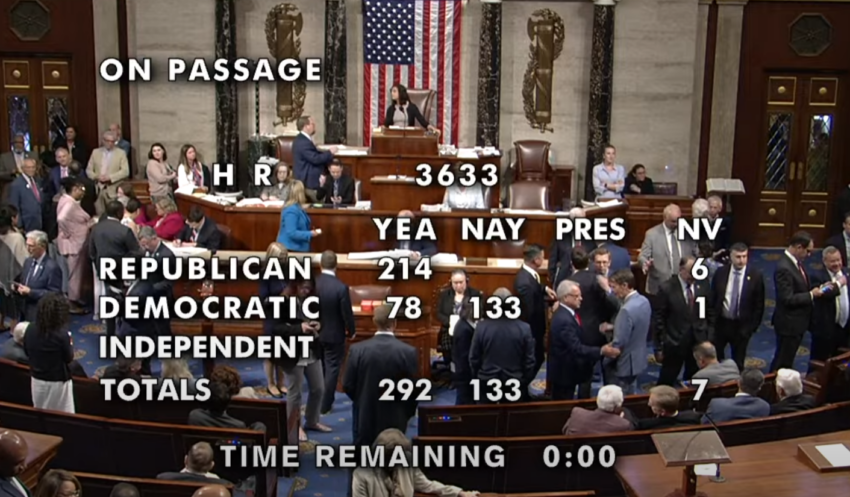-
The US House of Representatives has passed the CLARITY Act, a landmark bill defining regulatory frameworks for digital assets and establishing clear oversight roles for the SEC and CFTC.
-
The legislation introduces a $75 million safe-harbor exemption for digital commodity issuers and mandates rigorous standards for exchanges and brokers, aiming to enhance transparency and investor protection.
-
According to COINOTAG, the act’s passage signals a pivotal shift toward unified federal crypto regulation, potentially resolving long-standing jurisdictional ambiguities.
US House passes CLARITY Act, defining crypto regulations and oversight roles for SEC and CFTC, paving the way for national regulatory clarity in digital assets.
CLARITY Act Passes House Vote: Defining Crypto Regulatory Boundaries
The CLARITY Act represents a significant legislative milestone by explicitly categorizing digital tokens as either securities or commodities, thereby delineating the jurisdictional boundaries between the Securities and Exchange Commission (SEC) and the Commodity Futures Trading Commission (CFTC). This clarity is crucial for market participants who have long faced uncertainty regarding compliance obligations. The bill’s provision allowing projects to certify as “mature blockchains” introduces a tiered regulatory approach, reducing oversight for decentralized networks that meet specific criteria. This innovation encourages blockchain maturation while maintaining investor safeguards.
Moreover, the act establishes new regulatory categories for digital asset exchanges and brokers under the CFTC’s purview. These entities must adhere to stringent requirements concerning custody, anti-money laundering (AML) protocols, and operational transparency. By imposing these standards, the legislation aims to mitigate systemic risks and enhance market integrity.
Importantly, the act’s $75 million safe-harbor exemption for digital commodity issuers offers a pragmatic pathway for innovation, balancing regulatory compliance with market growth. Issuers benefiting from this exemption are obligated to provide ongoing disclosures and uphold investor protections, fostering trust and accountability within the crypto ecosystem.

The legislation also affirms the fundamental right of individuals to self-custody their crypto assets, a critical aspect for user sovereignty and security. Additionally, it preempts conflicting state laws, ensuring a cohesive national regulatory framework that reduces fragmentation and compliance complexity for businesses operating across state lines.
Industry and Political Reactions to the CLARITY Act
The House’s approval of the CLARITY Act has been met with mixed reactions. While many industry stakeholders welcome the regulatory certainty and clear division of authority, some Democratic lawmakers have expressed concerns regarding the potential diminution of the SEC’s enforcement capabilities. Despite this, the bill is widely regarded as the most comprehensive US crypto legislation to date, addressing long-standing ambiguities that have hindered market development.
The bill now proceeds to the Senate, where its fate remains uncertain amid ongoing political negotiations. If enacted, the CLARITY Act would be signed into law by President Trump, whose administration has publicly endorsed the measure. This legislative momentum follows the House’s recent passage of the GENIUS Act, targeting stablecoin regulation, signaling a broader federal initiative to establish robust crypto oversight.
What’s Next? Senate Review and Implementation Timeline
The Senate’s review of the CLARITY Act will be closely watched by industry participants and regulators alike. Should the Senate approve the bill, the implementation phase is expected to commence in 2026, with the SEC and CFTC tasked with developing detailed rules and enforcement mechanisms. This phased approach allows for stakeholder input and regulatory refinement, aiming to balance innovation with investor protection.
Market participants are advised to monitor legislative developments and prepare for compliance adjustments. The act’s passage underscores the importance of proactive engagement with regulatory frameworks to navigate the evolving crypto landscape effectively.
Conclusion
The CLARITY Act’s passage in the House marks a pivotal step toward establishing a coherent and balanced regulatory environment for digital assets in the United States. By clearly defining asset classifications and regulatory responsibilities, the legislation promises to reduce uncertainty and foster sustainable growth within the crypto sector. While challenges remain as the bill advances through the Senate, its comprehensive framework sets a new standard for federal crypto oversight, emphasizing transparency, investor protection, and innovation support.
